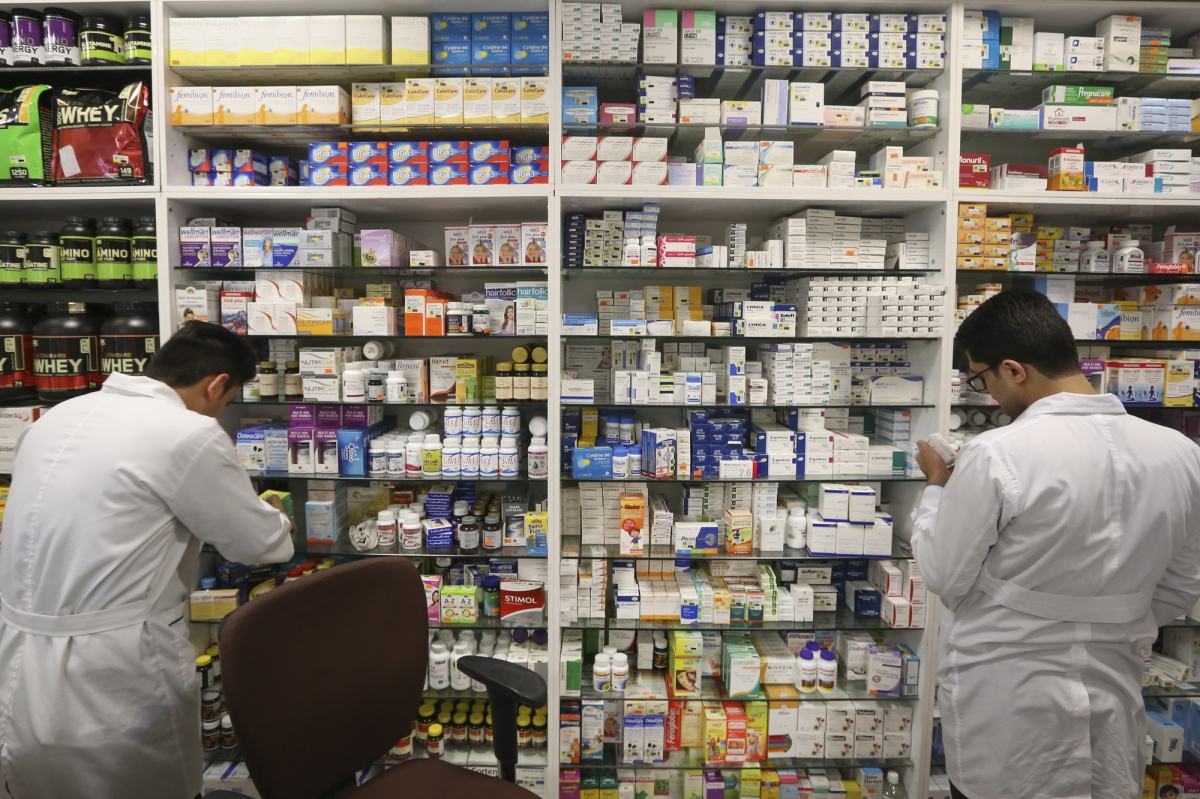The Third International Exhibition on Pharmaceuticals and Related Industries, also known as Iran Pharma 2017, opened in Tehran on Tuesday.
Attended by top industry officials and more than 500 local and foreign companies from 30 countries, the expo concludes on Thursday.
Close to 150 firms from Italy, Germany, France, Denmark, England, Switzerland, Belgium, Japan, South Korea, China, Spain and India are offering their latest products, technologies and industrial machinery at the event.
This is the second major pharmaceutical expo in Iran after the country signed a landmark nuclear deal, officially named as the Joint Comprehensive Plan of Action, with world powers in July 2015.
Compared to the second edition of the expo held last year, the hype for rushing to the Iranian pharmaceutical market had noticeably cooled down and what was evident was an established trust in investing and working in Iran. Most of last year’s big names were around again and new players seem to have followed their lead.
The global pharmaceutical industry's turnover now exceeds $1 trillion and is expected to reach $1.6 trillion by 2018. Iran’s 80 million population obviously points to a massive market and its close proximity to the 400 million-strong market in the region makes it even more desirable for any global producer.
This is while the local market is dominated by domestic producers.
According to Abbas Kebriaei-Zadeh, the head of the Syndicate of Iranian Pharmaceutical Industries, more than 96% of drugs used in Iran are locally manufactured and 50% of their raw materials are available domestically.
Accordingly, what Iran needs is not new drugs, save for a few niche products, but modern production technologies and ways of increasing economies of scale.
Years of underdevelopment, economic slowdown and a subsequent lack of financial resources due to sanctions severely impeded the Iranian pharmaceutical industry’s path to growth.
Investment banks, industrial solution providers and technology leaders at Iran Pharma 2017 were offering a cure for these woes.
> New Ideas for Financing Health Industry
Before there is a product, capital is needed. And the lack of it seems to be the Achilles' heel of the Iranian pharmaceutical industry, alongside many other economic sectors.
The Iranian economy has traditionally been dependent on the money market for finance. Things have been going south for the past few years, with banks hitting a financial rock bottom.
High accumulated losses of many major banks have emptied their coffers and made them turn to offering interest rates higher than inflation on deposits and loans. On the one hand, this has locked a huge chunk of liquidity in banks’ vaults, and on the other this has made borrowing for businesses very costly.
Consequently, many businesses, including the pharmaceutical industry, are looking for alternative means of financing their projects, such as the capital market.
Amin Investment Bank’s first-time presence at Iran Pharma underlined this fact. This is while investment banks are a rare sight at most expos in Iran.
“One of our primary aims in participating in the event was to raise awareness about methods of financing in the health sector, as lack of information usually drives companies toward the money market,” the company's representative, Sonay Amirbabayi, told Financial Tribune on the sidelines of Iran Pharma 2017.
Since its inception in 2007, Amin has handled $96 million of debt market making and underwriting as well as $655 million of capital raising and initial public offering advisory for Iran’s health industry, according to company data.
The investment bank has recently established a specialized center for financial advisory in the health sector called Center for Health Solutions.
The new initiative is part of Amin’s strategy for reorienting its financial advisory services in three specialized centers, namely Electricity and Energy Solutions Center, TMT Solutions Center and Center for Health Solutions.
The health center’s services include end-to-end advisory, investment services and raising capital for entrepreneurs in the health sector, namely pharmaceutical companies, research centers, healthcare organizations and medical device suppliers and producers, according to info on the center’s website.
“The center also aims to address one of the main shortcomings in the Iranian health industry, which is the players’ lackluster size and scale. We have too many small companies in the sector and their limited scale and opaque financial status prevent them from using financing methods in the capital market," Amin Investment Bank’s representative said.
"By using our extensive database on Iran’s health sector, we can help them through financial restructuring, advisory on merging or helping find foreign joint ventures.”
According to Amirbabayi, the center offers another solution: joint-venture funds.
“You do realize that most of the financing in the health sector does not happen simply for upping production of drugs that already exist in the market, but actually for R&D. A new formula, or product, is what will lead to a boost in revenues, not [necessarily] increased output,” she said.
This is where venture capital funds come to the rescue. They fund new, progressive projects for the sector that can bring about considerable returns for pharma companies.
> Sanctions Snapback Not a Threat
Another notable attendee was Danish drugmaker Novo Nordisk, the world’s top insulin supplier. The company has had a sustained presence in Iran throughout the sanctions era ever since 2005 and has made one of the largest foreign direct investments in the country post-JCPOA: a €70 million insulin production factory scheduled to come on stream in 2020.
In the eyes of most investors, Novo Nordisk’s decision to invest heavily in Iran could be seen as a huge risk. The idea is further gaining ground based on the recent threats to nuclear deal from the bellicose US administration.
Next month, US President Donald Trump must decide whether to re-certify the deal to congress, as per a law passed by Congress that requires the president to affirm Iran’s compliance every 90 days.
Trump has already signaled the desire to kill the deal. If so, an eager congress might decide to re-impose economic sanctions on Iran, shaking global investors’ confidence in the country.
However, as an investment pioneer in Iran, Novo Nordisk remains nonchalant.
“Our deal [for setting up the insulin plant, signed in 2016] has been validated by both our own lawyers and American law experts. Under no circumstances will anything change about the deal,” Hossein Safaei, Public Affair Specialist of Novo Nordisk Pars (the Danish firm's representative in Iran), told Financial Tribune, emphasizing that the company will not back down under any new sanctions.
“We actually made our deal in the midst of sanctions, so even if anything does happen, we will simply be back in the pre-JCPOA condition, which we have already experienced.”
But still, that does not mean that operating in Iran is an easy task, or may not be facing more difficulties.
Novo Nordisk has so far been unable to utilize essential American software such as Microsoft Office and Windows in its daily operations in Iran due to US sanctions on software licensing in place.
“We are currently using other alternatives such as Linux (and open-source operating system) with virtual access to company servers in Denmark for everyday operations. Coupled with the issue of slow Internet speed here, this does obviously cost us extra time and money,” Safaei said.



